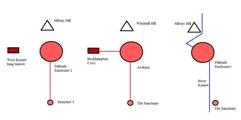
Figure 16: Schematic diagram of the relationship parallels within the Avebury landscape.
An interesting aspect of this landscape, suggested by the modelling process, is the parallel between the relationships of the Sanctuary, Avebury, Windmill Hill and the Beckhampton Cove, and the monuments to the south-west of the area: the palisade enclosures, Silbury Hill and West Kennet long barrow. It would seem that these latter features present a reflection or model, albeit still on a monumental scale, of the megalithic ones. The smaller timber enclosure (Structure 4) at the end of the long radial parallels the Sanctuary, both having a relatively small diameter compared to the larger structures with which they are connected. The radial line of posts, being a line of uprights that connects a small enclosure to a larger one, parallels the stones of West Kennet Avenue. Palisade enclosure 2, the largest timber enclosure parallels Avebury itself. As one approaches the palisade enclosures, Silbury Hill can be seen above and behind it just as when one approaches Avebury, Windmill Hill can be seen behind. And finally, just as the Beckhampton Cove and its associated long barrows, places of the ancestors, stand to the west of Avebury, so West Kennet long barrow stands to the west of the palisade enclosures. However, as the palisade enclosures might be seen as a place of the living, unlike at Avebury with the Beckhampton Avenue, there is no direct approach to the West Kennet long barrow, a place of the deepest ancestral time. This lack of direct approach to the West Kennet long barrow may reflect the fact that the barrow was closed by this time, unlike the Beckhampton Cove.
A second parallel might be suggested where the Kennet River can be followed from near The Sanctuary and through palisade enclosure 1. Again, one might suggest that the river provides a route of approach roughly from the south-east, as the radial does for palisade enclosure 2 and the West Kennet Avenue does at Avebury. As one follows the Kennet upstream and enters palisade enclosure 1, Silbury Hill can be seen standing above the entrance, just as it does above palisade enclosure 2 and as Windmill Hill does above Avebury. There is much in the ethnographical record to suggest that watercourses were seen as important links between different spiritual worlds, for instance the Kets of Siberia believed that rivers linked the worlds of the spirits, the living and the dead just as they linked different parts of the landscape (Zvelebil 2003). One might suggest that in following the Kennet from the Sanctuary, upstream and toward its source, so the people are following it to their source: the place of the ancestors. Indeed, following the Kennet upstream to the Avebury region itself might also have been recognised as a journey or pilgrimage to the place of the ancestors.
That these parallels exist might suggest that the area around Avebury was viewed very much as a linked and unified landscape, a landscape where both the natural and the cultural were seen to reference each other and to denote journeys to important places of the ancestors.
© Internet Archaeology/Author(s)
URL: http://intarch.ac.uk/journal/issue27/3/3.8.html
Last updated: Tues Oct 27 2009